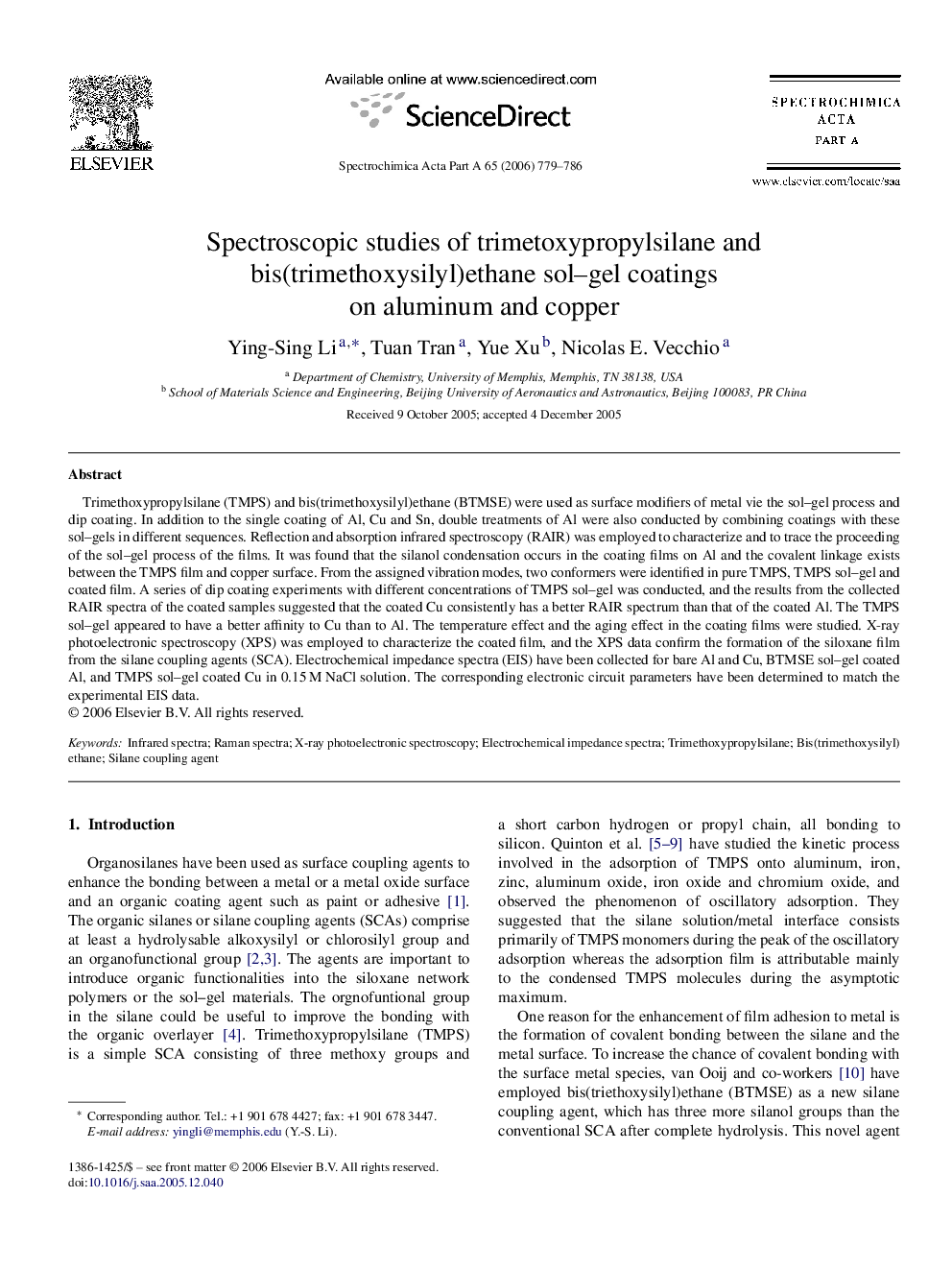| Article ID | Journal | Published Year | Pages | File Type |
|---|---|---|---|---|
| 1236317 | Spectrochimica Acta Part A: Molecular and Biomolecular Spectroscopy | 2006 | 8 Pages |
Trimethoxypropylsilane (TMPS) and bis(trimethoxysilyl)ethane (BTMSE) were used as surface modifiers of metal vie the sol–gel process and dip coating. In addition to the single coating of Al, Cu and Sn, double treatments of Al were also conducted by combining coatings with these sol–gels in different sequences. Reflection and absorption infrared spectroscopy (RAIR) was employed to characterize and to trace the proceeding of the sol–gel process of the films. It was found that the silanol condensation occurs in the coating films on Al and the covalent linkage exists between the TMPS film and copper surface. From the assigned vibration modes, two conformers were identified in pure TMPS, TMPS sol–gel and coated film. A series of dip coating experiments with different concentrations of TMPS sol–gel was conducted, and the results from the collected RAIR spectra of the coated samples suggested that the coated Cu consistently has a better RAIR spectrum than that of the coated Al. The TMPS sol–gel appeared to have a better affinity to Cu than to Al. The temperature effect and the aging effect in the coating films were studied. X-ray photoelectronic spectroscopy (XPS) was employed to characterize the coated film, and the XPS data confirm the formation of the siloxane film from the silane coupling agents (SCA). Electrochemical impedance spectra (EIS) have been collected for bare Al and Cu, BTMSE sol–gel coated Al, and TMPS sol–gel coated Cu in 0.15 M NaCl solution. The corresponding electronic circuit parameters have been determined to match the experimental EIS data.
